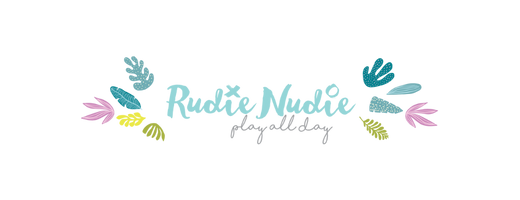So in amongst the 101 things that we need to think about during pregnancy and preparing for the birth, the one person we often forget about is our self. With our bodies going through so many physical changes, and undergoing child birth, it’s really important that we put some focus on strengthening our pelvic floor muscles.
I recently caught up with the lovely Lauren Clarke, who is a pelvic floor physiotherapist at Grow Physiotherapy in Yarraville and Kensington, to get a better understanding of what we can do to strengthen our pelvic floor muscles and when we might need to seek treatment to avoid longer term damage.
We all hear how important it is to do our pelvic floor exercises but could you explain the role that the pelvic floor muscles play and the impact that pregnancy and childbirth can have on them?
The pelvic floor muscles support the bladder, uterus and bowel. Pregnancy weakens the muscles due to load and hormonal changes. The pelvic floor muscles and nerves within the pelvis are stretched as the baby moves through the birth canal in a vaginal delivery. The muscles can sometimes be left damaged and not work as well as they normally would do (even if you have had a caesarean) resulting in bladder or bowel symptoms, vaginal prolapse or sexual pain.
After giving birth, what can we expect to feel with our pelvic floor muscles and what sort of exercises do you recommend in those early tender days?
Aim to start your pelvic floor exercises approximately 24 hours after giving birth (as long as your catheter is removed, your bladder is emptying well and you have not been told otherwise).
In the first two weeks the focus of your exercises should be to restore the connection between your brain and the pelvic floor muscles. Repeat short gentle holds (1-2 seconds only) every few hours in a lying or sitting position.
As you get stronger, try holding your contraction for a few more seconds. It is very important you feel the pelvic floor muscles tighten and then relax. Aim to do this 8-12 times in a row, repeating three times a day.
What do you recommend in terms of healthy amounts of exercise [walking/running] post birth to avoid further damage to your pelvic floor?
Returning to exercise following delivery should start with gentle walking (apart from pelvic floor muscle exercises of course!) when your pain and discomfort allows. Gradually increase your walking distance and pace. A 30-minute daily walk has been shown to improve your general health including mental well-being.
One of our main jobs as women’s health physiotherapists is to protect women and their ability to maintain physical activity for their overall health and wellbeing lifelong. The pelvic floor muscles can stretch up to 2.5 times their original length during a vaginal delivery and it can take 4-6 months for these muscles to fully recover. A caesarean scar can take more than 7 months to reach full strength.
Running is a high impact exercise which has almost 5 times the risk of creating pelvic floor related problems than low impact exercise (such as walking or swimming). Evidence shows that you are more likely to develop pelvic floor related problems if you start running before your baby is 3 months old, have any pre-existing hypermobility conditions (such as Ehlers-Danlos syndrome), are breastfeeding and have a caesarean or perineal scar.
So, head to a pelvic floor physiotherapist for advice and support on getting back into exercise that is safe and right for you.
What signs should we look for that our pelvic floor muscles aren’t functioning properly and when should we seek help from a pelvic floor physiotherapist?
Prolapse?
- A prolapse occurs when the support tissues (fascia, ligaments and pelvic floor muscles) within the pelvis no longer give your pelvic organs the support they need to sit in their correct position
- If you have a prolapse you may notice a heavy feeling or dragging in the vagina, may feel a lump or bulge on wiping or may experience difficulties emptying your bladder or bowels
- Half of all women who have had a vaginal delivery will have some level of prolapse
- Pelvic floor muscle training and lifestyle modifications are essential to make sure a prolapse does not worsen.
Bladder leakage?
- Women who have had a baby are three times more likely to leak urine than women who have not
- Leakage will not go away if you just ignore it, in fact it will worsen with age
- You may notice leakage with coughing, sneezing, running or jumping, getting to the toilet or after emptying the bladder
- Pelvic floor muscle training with the supervision of a physiotherapist has been shown to be highly effective for treating urinary incontinence.
It’s usually expected that we’re not going to look the same ‘downstairs’ as we did prior to having babies, but how do you know if there are abnormal changes to the labia/vaginal area?
All vulva’s look different regardless of whether you have had a baby or not.
Labial size and symmetry in most cases is not something to be concerned about as they come in all different shapes and sizes. Most variations are completely healthy and normal. Head to http://www.labialibrary.org.au as a reliable resource for anatomy and photo displays of the variations in normal tissue.
If you notice a distinctive change in the colour of your labia or observe lumps, bumps or differences in skin health it is essential you discuss this with a medical practitioner just like you would anywhere else on the body. Natural variation in colour is normal, some are pink and others are slightly brown and in most cases there is nothing to worry about but it is always best to double check.
Most importantly if there is any labial or vaginal discomfort, bleeding (beyond a normal period or the early postpartum loss) or irritation, you should speak to your GP. These can be signs of a vaginal prolapse, tissue that has less oestrogen, or potentially a vulval skin disorder.
Picking a GP that has a special interest in women’s health or somebody that you are comfortable with is essential for these appointments. I always encourage women to ask their obstetrician or GP to physically examine the vulval and vaginal areas following a delivery. Some will not routinely do this but I feel it helps empower you to understand the changes that have occurred, what is normal vs what is not and what steps you can take to help with tissue recovery.
What are your top tips for remembering to fit pelvic floor exercises into a new mum’s routine?
1. Link them in to an activity you do on a regular basis:
- For those with newborns this may be feeding
- As your little one ages and your strength improves you may be able to do them whilst having a shower or cleaning your teeth
- Something you do without thinking every day so that they can remain part of your routine on a lifelong basis.
- A note next to the chair you feed in
- A sticker on the bathroom mirror or in the shower
- A post-it note on the fridge or your coffee cup cupboard.
- There are some wonderful apps available that remind you to do your exercises, allow you to set up individual program routines, include exercise diaries and descriptions on how to improve your pelvic floor health
- My personal favourite is ‘Squeezy’ (squeezyapp.com) – it provides visual guides, tailored settings and has a symptom diary. It costs about $4.50 but is well worth the investment.
4. Check in regularly with your pelvic floor physiotherapist:
- Just like we regularly visit the dentist for a check up or optometrist to have our vision assessed it is a great idea to book in for a maintenance appointment. It helps to keep you accountable (we document your strength, endurance, function and symptoms at each visit) and can progress your program once your support gets better with practice!
What can a patient expect when they visit your practice?
The session is usually broken up into four sections:
- Questions about your symptoms (including bladder, bowel, prolapse, sexual and pelvic pain health), obstetric and gynaecological history, exercise regime and goals
- A physical examination – this may include a whole-body assessment, palpation of the tissues around the pelvis externally, a vaginal or rectal examination to assess pelvic floor function (all of this occurs only when the patient consents)
- Treatment – this may include pelvic floor exercise program prescription, manual therapy, exercise support, lifestyle modification education
- Setting goals, communicating with local services, referral on as required.
What conditions do you treat for pregnant/new mums?
Pelvic floor related problems including:
- Urinary incontinence or urgency
- Difficulty emptying the bladder
- Faecal incontinence or urgency
- Constipation management
- Vaginal prolapse
- Sexual and pelvic pain
Musculoskeletal conditions associated with pregnancy and being a new mum:
- Pelvic girdle and coccyx pain
- Abdominal muscle separation
- Back and neck pain
- Exercise advice and support
- Wrist and hand pain
- Breastfeeding support:
- Mastitis
- Blocked ducts






